Sports
/ArcaMax
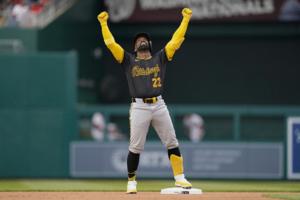
Jason Mackey: What is Andrew McCutchen's Pirates future? You can argue both sides.
PITTSBURGH — When Andrew McCutchen returned to the Pirates for the 2023 season, the goal was simple.
The unquestioned face of Pittsburgh baseball for an entire generation (and likely more) would finish his career where it all started, in the city he adopted as his own, while hopefully helping a young club return to the postseason.
That ...Read more
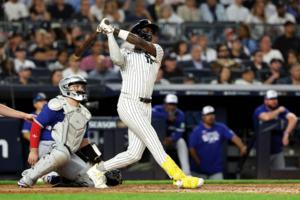
Yankees force Game 4 in ALDS vs. Blue Jays behind Aaron Judge's dramatic homer, Jazz Chisholm Jr.'s go-ahead blast
NEW YORK — The Yankees aren’t done just yet. They can thank Aaron Judge for that.
With his Yankees on the brink of elimination, Judge gave them new life in the most dramatic of fashions, clubbing a game-tying three-run home run to cap a historic comeback in Game 3 of the ALDS.
Judge’s instant-classic blast served as the biggest blow in ...Read more
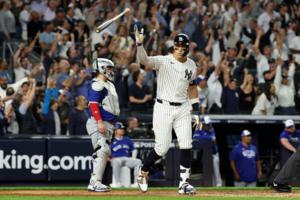
With the Yankees' season on the line, Aaron Judge met the moment
NEW YORK — As Aaron Judge braced for an 0-2 pitch, Yankee Stadium roared in unison.
“MVP! MVP! MVP!” the crowd bellowed, desperate for the New York Yankees’ captain to deliver a signature postseason moment.
Judge, whose prior postseason struggles have been well-documented, rose to the occasion, turning on a 99.7-mph, inside fastball ...Read more
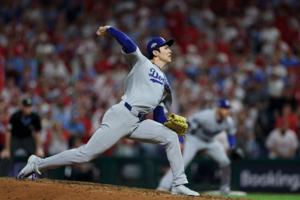
Dave Roberts explains why the Dodgers didn't use Roki Sasaki earlier in Game 2
LOS ANGELES — Dodgers manager Dave Roberts was trying to play the long game Monday night.
Which is why, when his team entered the ninth inning with a three-run lead in Game 2 of the National League Division Series, he gave the save opportunity to Blake Treinen instead of Roki Sasaki.
If all things had been equal, it’s likely that Roberts ...Read more
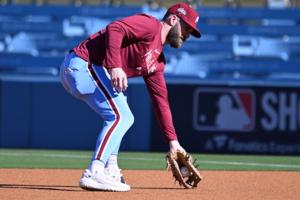
Phillies' Red October environment doesn't bother Bryce Harper: 'I boo myself'
LOS ANGELES — Bryce Harper played a lot of cards on the Phillies’ cross-country flight.
He didn’t spend a lot of time ruminating over the team’s two losses to open the National League Division Series against the Los Angeles Dodgers and the wasted opportunities in those games. After the Phillies arrived to Dodger Stadium for their ...Read more
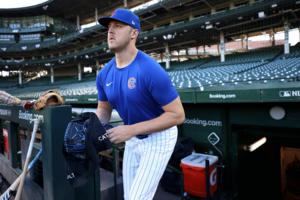
'The calm in the storm': Cubs again turn to Jameson Taillon to stave off elimination in NLDS Game 3
CHICAGO — Jameson Taillon tends to get super nervous watching games from the dugout.
But once he makes the walk to the outfield on start days to begin warming up, those feelings dissipate and the Chicago Cubs’ veteran right-hander feels locked in. That repetition is a reminder that it’s still the same game, no matter the stakes, when ...Read more
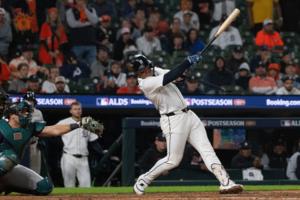
Mariners offense backs Logan Gilbert in Game 3 win for 2-1 ALDS lead vs. Tigers
DETROIT — The split-finger fastball — statistically the best strikeout pitch — was fired with complete conviction and cruel intentions.
Logan Gilbert didn’t want it to be his last pitch of the night, not with the way he was executing. But if his final pitch of the sixth inning was going to be his last of his outing, it was going to be ...Read more

David Murphy: Rob Thomson's bunt call, Dave Dombrowski's NLDS roster killed Phillies in Game 2
PHILADELPHIA — Rob Thomson said he was playing for the tie, which means the process was as flawed as the result.
The Phillies lost Game 2 of the NLDS because they did not try to win it.
It’s as simple as that. You do not negotiate with the jaws of defeat. You snatch the victory or you die trying.
Here lie the Phillies, 4-3 losers of Game ...Read more
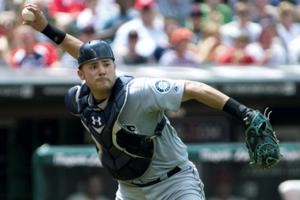
Ex-Mariners catcher Jesús Montero reportedly involved in motorcycle accident
One-time top Mariners prospect Jesús Montero is in a Venezuela hospital after being involved in a serious motorcycle accident, according to reports out of the country.
Venezuelan media reported that Montero was riding his motorcycle when he was hit by a pickup truck sometime last weekend. Details emerging from the country are limited, but ...Read more

Bill Shaikin: Inside the Mookie Betts play call that won NLDS Game 2 for the Dodgers
PHILADELPHIA — Even Dodgers fans steeped in the lore of Kirk Gibson might not remember the name of Mel Didier.
Didier was the scout who had issued this warning to the 1988 Dodgers: If you're facing Dennis Eckersley, the mighty closer for the Oakland Athletics, and the count runs full, he's going to throw a backdoor slider.
Eckersley threw it...Read more
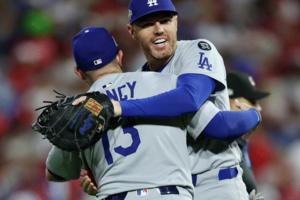
Dylan Hernández: The Phillies are done, and the Dodgers' path to the World Series looks clear
PHILADELPHIA — This is over.
Or, from the perspective of the Dodgers, this is just starting.
Because the Dodgers are returning to the World Series.
Technically, they still have to close out their National League Division Series against the Philadelphia Phillies. They still have to win the NL Championship Series.
But they will.
They will ...Read more
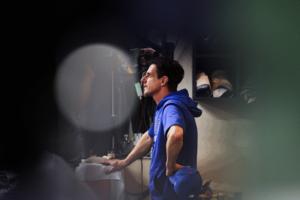
Paul Sullivan: Is beating the Cubs and manager Craig Counsell the Brewers' World Series?
MILWAUKEE — The much-anticipated National League Division Series battle between managers Craig Counsell and Pat Murphy has been one-sided so far.
Murphy has the decisive edge over his old friend and former boss after the Milwaukee Brewers’ 7-3 win over the Chicago Cubs on Monday at American Family Field, giving them a 2-0 lead in the best-...Read more
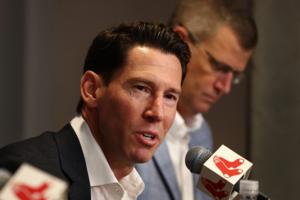
Mac Cerullo: Red Sox took next step, but can't rest on their laurels in 2026
BOSTON — In each of the last three seasons, Sam Kennedy took the podium for the Red Sox’s year-end press conference and attempted to explain why his club had once again fallen short of its goal to reach the postseason.
While the end came sooner and more abruptly than anyone would have hoped, this year the Red Sox president and CEO was ...Read more
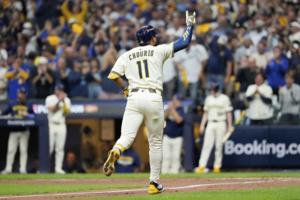
Chicago Cubs on cusp of season ending following a 7-3 Game 2 NLDS loss to the Milwaukee Brewers
MILWAUKEE — The first inning of Game 2 in the National League Division Series might haunt the Chicago Cubs and their dreams of a deep postseason run.
Left-hander Shota Imanaga‘s inability to toss a zero in the opening frame doused another electric start for the Cubs. Seiya Suzuki’s three-run home run in the top of the first against ...Read more
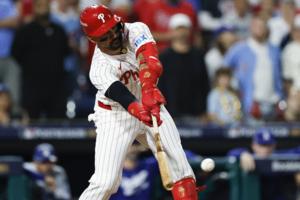
Marcus Hayes: 'The writing's on the wall': Phillies face elimination after their billion-dollar bats go silent again
PHILADELPHIA — When the epitaph of the latest, briefest Golden Era of the Phillies franchise is written, what will be writ most large is how, for four games in the postseason the nearly $1 billion investment in the offense returned pennies on the dollar.
This is that epitaph, writ now.
In the first two games of the National League Division ...Read more

Mariners' Josh Naylor away from ALDS workout for 'personal reasons'
DETROIT — As the Seattle Mariners rolled through Monday afternoon’s workout at Comerica Park, getting their bodies moving after an overnight flight and arriving in Detroit at 6 a.m. local time, there was a player noticeably missing on the field.
First baseman Josh Naylor, normally clad in a wool Mariners beanie and customized hockey shirt ...Read more
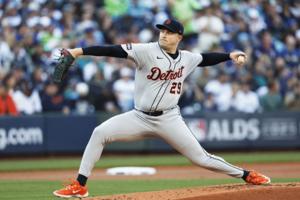
Bob Wojnowski: Coming home, Tigers can't waste any more chances in tied, tight series
DETROIT —The Tigers have been on the long, hard road for a while now, under immense pressure since early September. After two tight playoff games in Seattle, nothing much has changed.
You didn’t think it was suddenly going to be clean and easy after all the Tigers have gone through, did you? Same final score in Game 2 Sunday night, same ...Read more
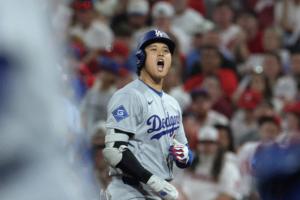
Dodgers lean on big 7th inning to defeat Phillies and take 2-0 NLDS lead
PHILADELPHIA — It was quintessential October baseball.
Two starting pitchers dominating two helpless lineups.
A low-scoring contest in which every stranded baserunner felt like a monumental missed opportunity.
A nail-biting affair decided by one team cashing in a rare scoring chance, and the other failing to do the same.
In the bottom of ...Read more
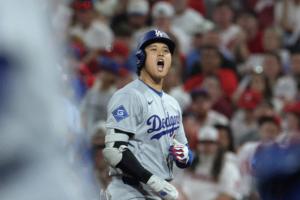
Dylan Hernandez: The Phillies are done, and the Dodgers' path to the World Series looks clear
PHILADELPHIA — This is over.
Or, from the perspective of the Los Angeles Dodgers, this is just starting.
Because the Dodgers are returning to the World Series.
Technically, they still have to close out their National League Division Series against the Philadelphia Phillies. They still have to win the NL Championship Series.
But they will....Read more
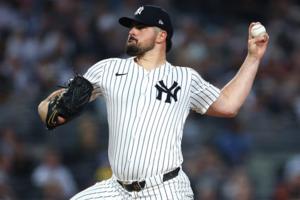
Yankees have 'a ton' of confidence in Carlos Rodón with season on line vs. Blue Jays: 'One of our horses'
NEW YORK — For the second week in a row, the New York Yankees are turning to Carlos Rodón with their season on the line.
As the Yankees’ starter for Tuesday night’s win-or-go-home ALDS Game 3 in the Bronx, Rodón is tasked with cooling off a torrid Toronto Blue Jays lineup that erupted for 23 runs over the first two games.
The Yankees ...Read more
Popular Stories
- Paul Sullivan: Is beating the Cubs and manager Craig Counsell the Brewers' World Series?
- Yankees force Game 4 in ALDS vs. Blue Jays behind Aaron Judge's dramatic homer, Jazz Chisholm Jr.'s go-ahead blast
- Mariners offense backs Logan Gilbert in Game 3 win for 2-1 ALDS lead vs. Tigers
- Dave Roberts explains why the Dodgers didn't use Roki Sasaki earlier in Game 2
- David Murphy: Rob Thomson's bunt call, Dave Dombrowski's NLDS roster killed Phillies in Game 2





